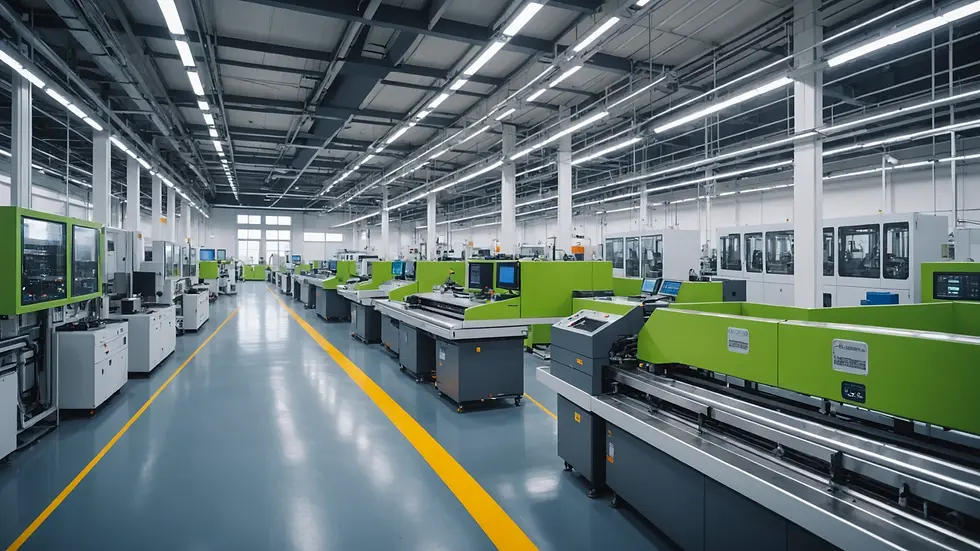Unveiling the Unseen: The Impact of Vendor Evolutions in Manufacturing
- andrew
- Feb 21
- 4 min read
In the dynamic landscape of manufacturing, the role of vendors extends far beyond mere transaction facilitators. The evolution of vendors – from traditional suppliers to strategic partners – has become a pivotal element in enhancing efficiency, driving innovation, and fostering sustainability within the industry. As manufacturers adapt to rapidly changing market conditions, understanding the nuances of vendor relationships can unlock significant value.
The Shift in Vendor Relationships
Historically, the relationship between manufacturers and vendors was transactional. Vendors supplied raw materials or components as per the specifications and the best price available. However, this approach has evolved dramatically in recent years. Today's manufacturers need vendors that can provide added value through innovation, responsive supply chains, and flexibility to adjust to changing demands.
This evolution means that manufacturers are investing more in thorough vendor evaluations, focusing on a vendor's ability to contribute strategically rather than solely on price. This shift emphasizes the synergy between vendor capabilities and manufacturing goals, leading to a more integrated approach.
The Importance of Vendor Reliability
Reliability is a quintessential attribute for any manufacturing vendor. A dependable vendor ensures that materials or components are delivered on time, maintaining production schedules and preventing delays in the manufacturing process. The ability to count on consistent quality and timely deliveries plays a critical role in the smooth operation of manufacturing facilities.
When vendors evolve to incorporate advanced inventory management systems and real-time tracking, manufacturers benefit from improved forecasting and reduced stock levels. This reliability is not just advantageous; it is a necessity in a world where supply chain disruptions can occur unexpectedly.
Innovations Through Collaboration
One of the most significant aspects of evolving vendor relationships is the potential for innovation through collaboration. When manufacturers and vendors work closely together, they can tackle challenges that neither could address independently. This joint approach can lead to enhancements in product design, process optimization, and even the development of new materials or technologies.
Collaboration encourages vendors to invest in the latest technologies and methods, ensuring that the manufacturing processes remain efficient and cutting-edge. Through open lines of communication and cooperative problem-solving, both parties can explore new avenues for growth and efficiency.
Risk Management and Agility
In our increasingly unpredictable global marketplace, agility and risk management are paramount. Manufacturers are recognizing the value of vendors who can adapt quickly to changing circumstances. This necessitates a proactive approach to identifying potential risks, whether they come from geopolitical tensions or natural disasters.
Evolving vendors that proactively manage their own supply chain risks contribute to the overall robustness of the manufacturing process. Such vendors are often better equipped to pivot, ensuring that production lines remain uninterrupted despite outside influences.
Sustainability Initiatives
As environmental concerns continue to rise, sustainable practices have become crucial for manufacturers. A significant aspect of vendor evolution involves their commitment to sustainable methods. Today’s manufacturers prefer to partner with vendors who share their dedication to sustainability, whether through eco-friendly packaging, energy-efficient processes, or responsible sourcing of materials.
This focus on sustainability is not merely an ethical choice; it can also improve a manufacturer's competitive edge, as consumers increasingly favor environmentally responsible brands. Vendors that prioritize sustainability not only align with a manufacturer's values but often provide cost-effective solutions that contribute to long-term viability.

Vendor Evaluation Criteria
With the transformation of vendor roles, manufacturers need to establish comprehensive criteria for vendor evaluation. This process should include assessing quality, reliability, innovation capabilities, sustainability practices, and cost-effectiveness.
Furthermore, a thorough evaluation allows manufacturers to gain insights into potential vendor partners who align closely with their business objectives. Investing time in finding the right vendors can lead to fruitful partnerships that yield benefits for both parties.
The Digital Transformation of Vendor Management
The rise of technology is reshaping every facet of manufacturing. Vendor management is no exception. Digital tools and platforms enable manufacturers to manage vendor relationships more effectively, allowing for enhanced communication, performance tracking, and data analysis.
With the integration of artificial intelligence and machine learning, manufacturers can make data-driven decisions regarding vendor selection, optimizing their supply chain based on predictive analytics and real-time insights. This level of sophistication elevates the strategic role vendors play in the manufacturing ecosystem.
Conclusion
The evolution of vendors within the manufacturing sector presents numerous opportunities for growth, innovation, and sustainability. As manufacturers increasingly view their vendors as strategic partners rather than simple suppliers, the collective efforts toward common goals become more pronounced.
By embracing this change, manufacturers can ensure they remain competitive in a challenging market landscape. The emphasis on reliability, collaboration, risk management, and sustainability cannot be overstated. Moving forward, manufacturers must recognize the value of strong vendor relationships and invest accordingly to unlock their full potential.

Through this theme of mutual benefit and strategic alignment, the manufacturing industry will continue to thrive, adapting to ever-changing demands in a global economy. Vendor evolutions are not just about supply; they are about forging partnerships that will lead the way into a sustainable and technologically advanced future.





Comments